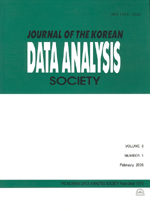투자성향효과가 투자성과에 미치는 영향
The Impact of the Disposition Effect on Investment Performance
- 한국자료분석학회
- Journal of The Korean Data Analysis Society (JKDAS)
- Vol.13 No.1
-
2011.02391 - 402 (12 pages)
- 10

행태재무론 분야의 연구에 따르면 투자자들은 일반적으로 수익이 난 종목은 서둘러 처분하고 손실이 난 종목은 지나치게 오래 보유하는 경향이 있다. 본 연구에서는 이같은 ‘투자성향효과’(disposition effect)를 체계화한 거래규칙(I)을 설정하는 한편 그와 정반대되는 거래규칙(II)을 설정한 다음 이들 규칙을 1980년부터 2010년까지의 월별 종합주가지수(KOSPI) 자료에 적용했을 때의 투자성과를 비교 분석하였다. 분석 결과는 놀랍게도 ‘주가가 오르면 사고 주가가 내리면 파는’ 거래규칙 II의 투자성과가 ‘주가가 오르면 팔고 내리면 사는’ 거래규칙 I에 비해 성과가 우월한 것으로 나타났다. 또 투자성과의 차이는 투자기간이 길수록 더 두드러지게 나타나는 경향이 있었다. 이와 같은 결과는 주가지수가 안정적인 시계열이 아니라 단위근을 갖는 적분된 시계열이라는 사실과 밀접한 관련이 있는 것으로 추측된다.
According to the literature in Behavioral Finance, investors have a tendency to sell winners (i.e., stocks of which prices are above the purchase prices) too early and ride losers (i.e., stocks of which prices are below the purchase prices) too long. This study investigates the impact of the disposition effect on the long-term investment performance. Two symmetric trading rules are proposed. The first rule can be called ‘BLASH’ (Buy Low and Sell High) rule, and the second rule can be called ‘BHASL’ (Buy High and Sell Low) rule. To one’s surprise, the BHASL rule proves to be much more profitable than the BLASH rule in most cases when applied to the monthly KOSPI data from January 1980 through December 2010. Furthermore, such phenomenon gets more prominent as the investment horizon gets longer. Also, those results seem to be quite robust. I conjecture that the statistical property of the KOSPI that it is an integrated time series may have played an important role in the BHASL rule performing better than the BLASH rule.
1. 서론
2. 투자성향효과와 거래규칙
3. 실증분석
4. 결론
참고문헌
(0)
(0)